Found in the Fells – May
It felt for a while as if spring would never come
and now
everything is happening at once. Of any
month May sees the most action, the greatest change in the Fells, and
the greatest abundance of flowers on the forest floor.
In early May the trees haven’t fully leafed out yet and so we get the early spring flowers taking advantage of the strong sunlight that is still reaching the forest floor, some of them, of course, already flowering in late April. In the first ten days of May look for Trout Lilies – the yellow flowers like miniature day lilies, the leaves pale green with brown blotches like a trout. And this is when blueberry bushes flower with low-bush leading the pack usually in bloom by May 1st on sunny hill-tops with clusters of small white bells, flushed with pink in the bud. The bees are happy and, if everything goes according to plan, we’ll be picking blueberries in July.
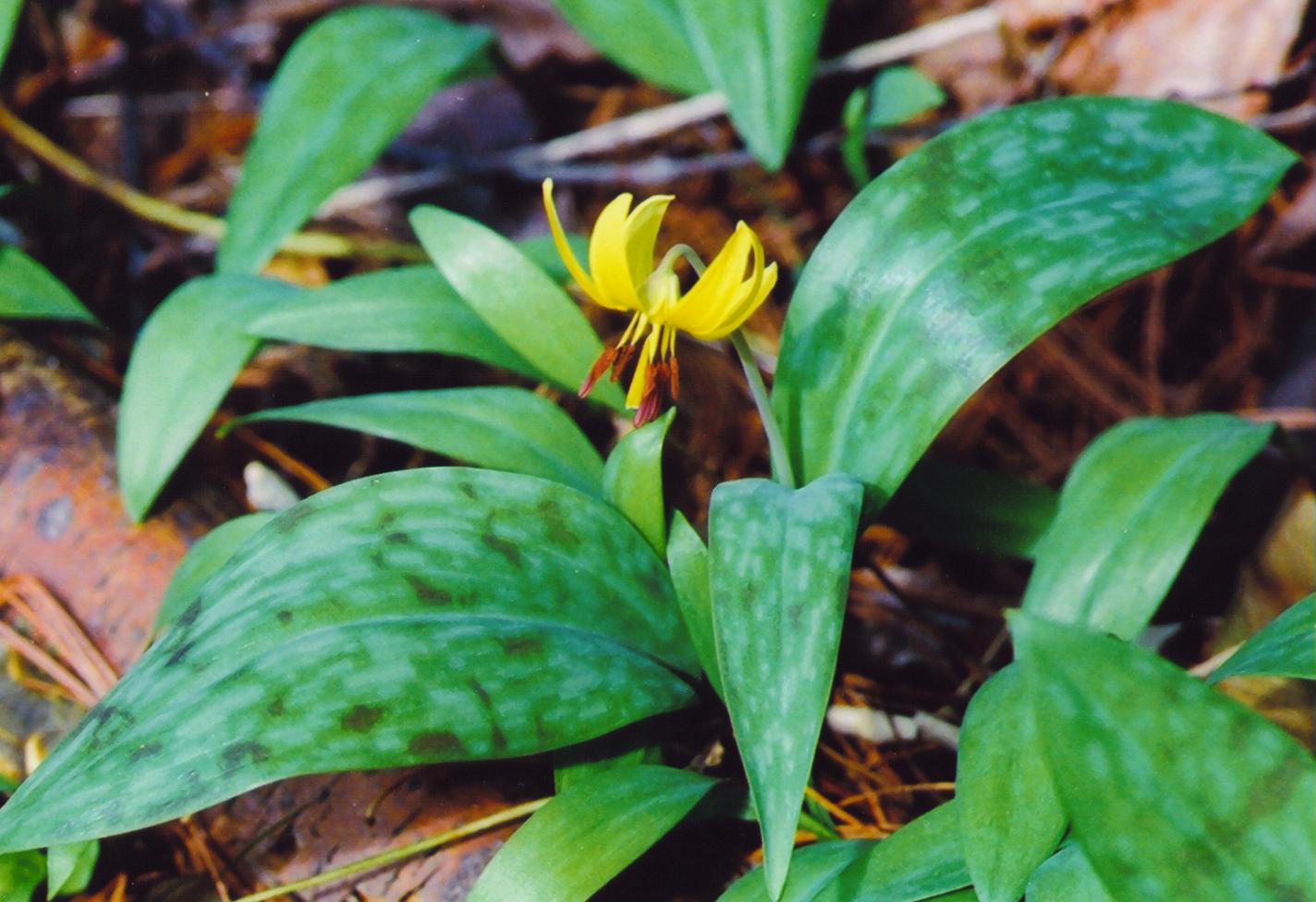
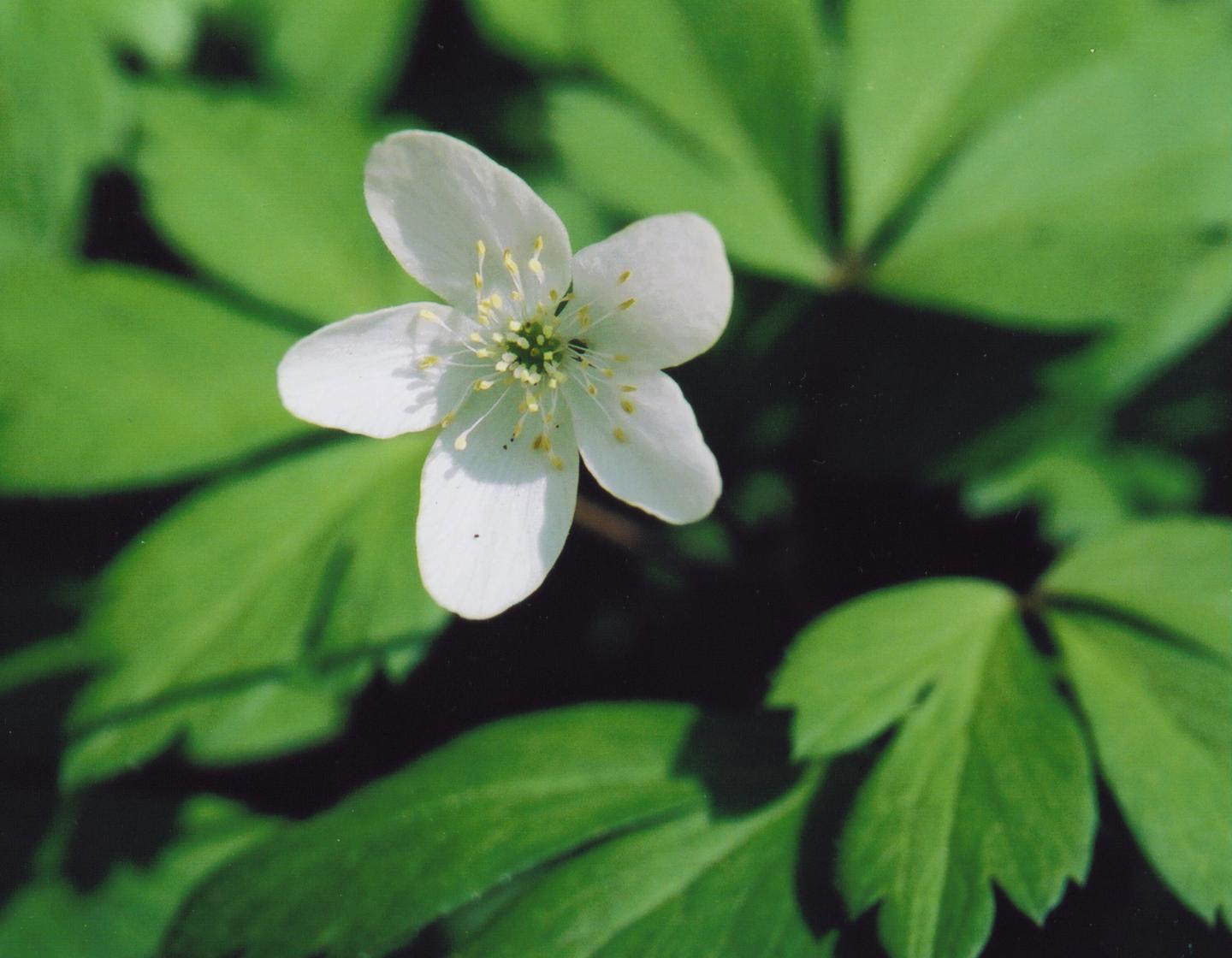
Trout Lily Erythronium
americanum 5-02-03
Wood anemone Anemone
quinquefolia 5-06-04
The high-bush species
is only a few days behind often to be found in damper situations along
the
shoes of ponds. The white bells are somewhat longer than the low-bush
species.
This frustrates the wood bumblebee with its short tongue as it cannot
reach up
inside the bells to get the nectar. So, it cuts a slit on the side in
order to
stick its tongue in and steal the nectar without therefore fulfilling
its part
of the bargain and carry pollen to the next bush. Too many bumblebees
doing
this and it must surely affect berry production. About a week later the
middle-sized pale blueberry (sometimes confusingly called early
low-bush), Vaccinium pallidum,
comes
with its flowers that vary between creamy-green to coppery color. It is
not
until mid-May that the Huckleberry blooms with its distinct looking
flowers. Other early May flowers in the
Fells are violets, Bellwort, wood anemone and Jack-in-the-pulpit.
And those Bearberry buds, that have slowly been developing since early
March, finally blossom in clusters of little red-trimmed bells.
These flowers with their constricted openings can also can get
'slitted'.
Bearberry Arctostaphylos uva-ursi 5-14-05
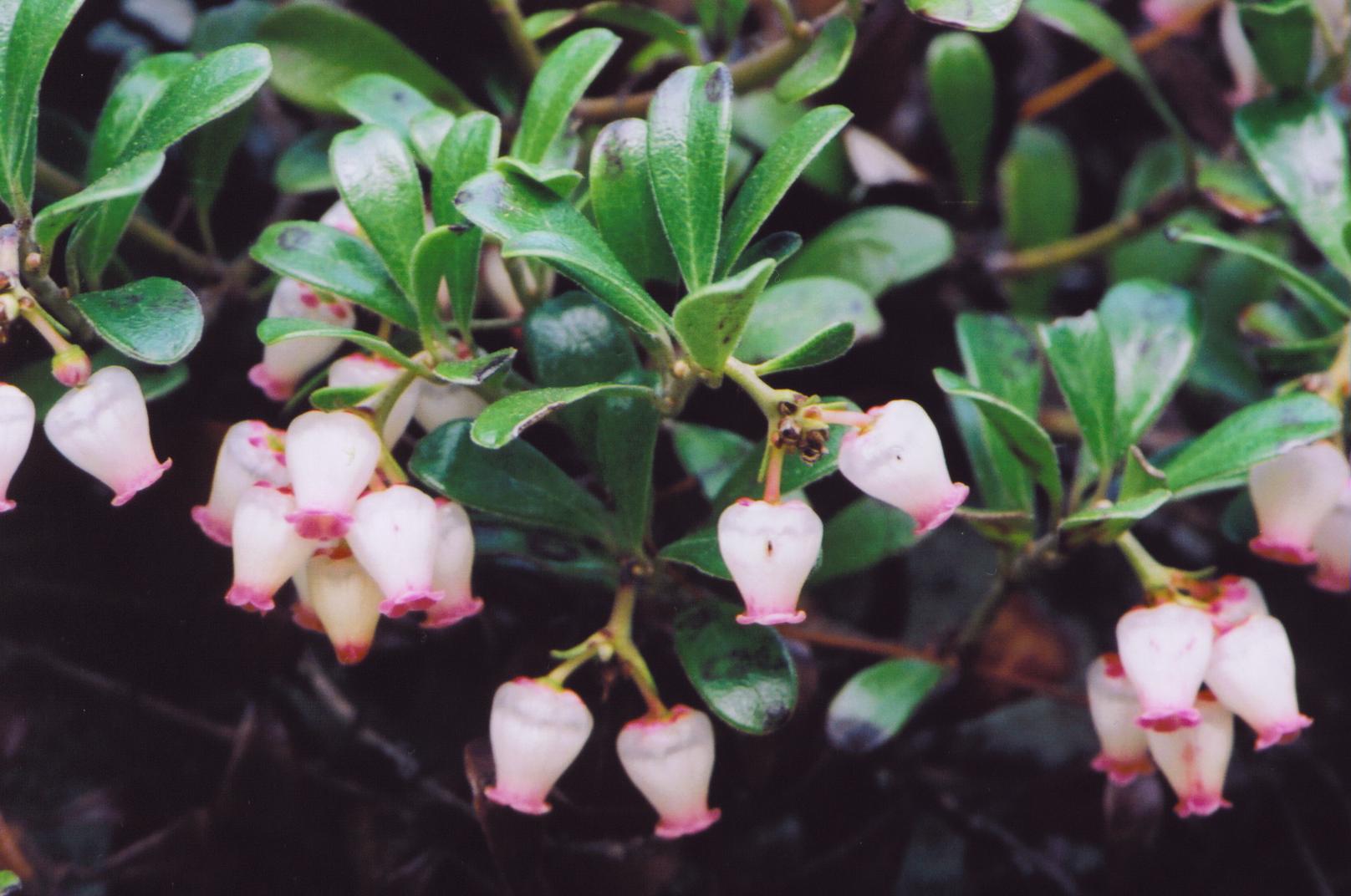
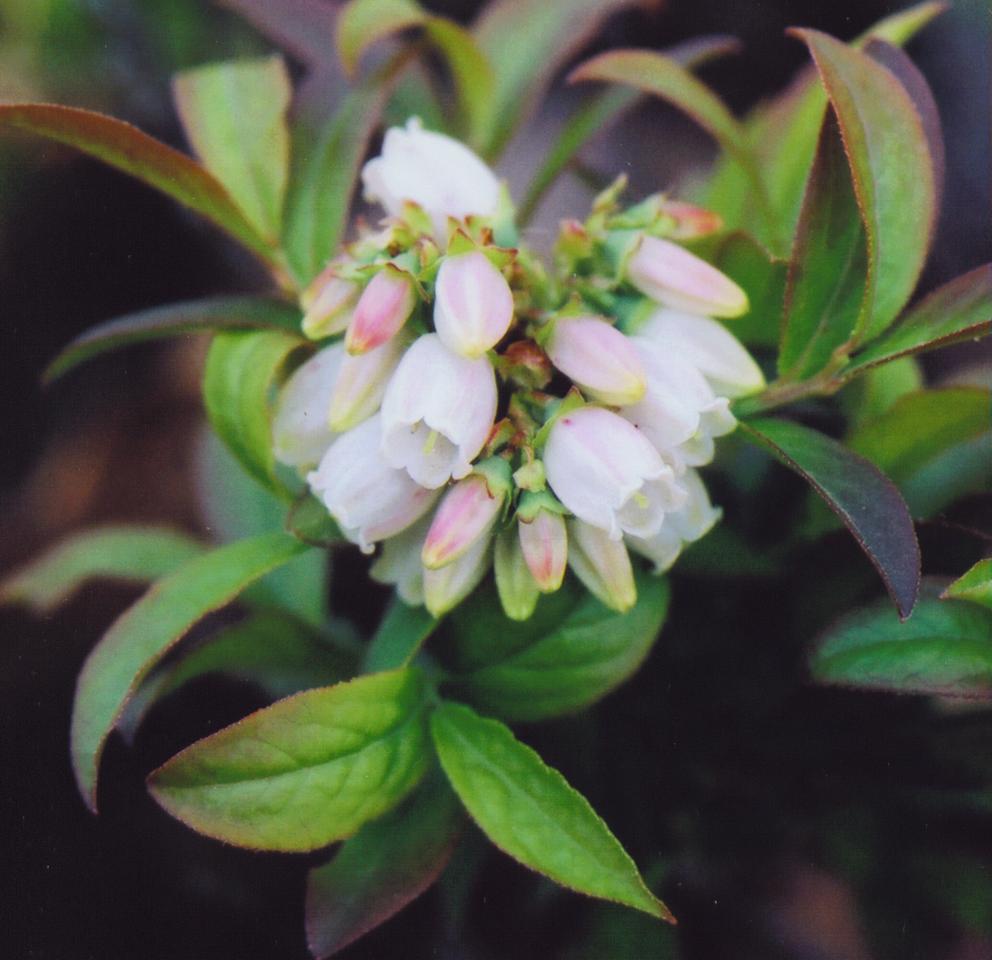
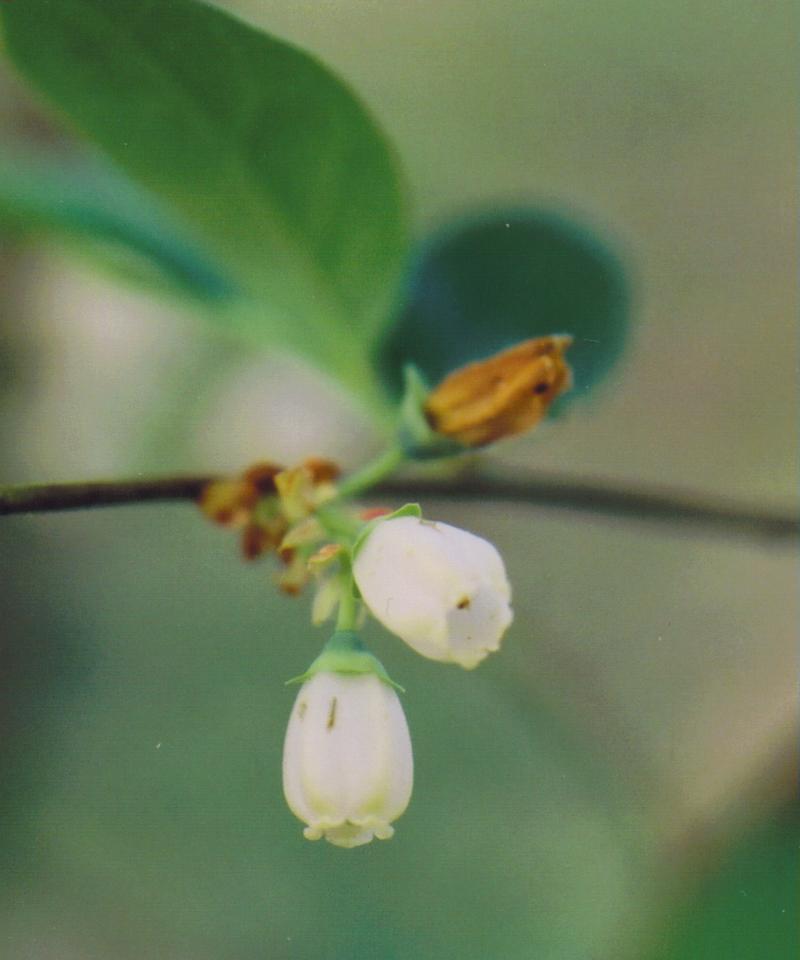
Low-bush blueberry 5-01-04 High-bush blueberry 5-14-04
Vaccinium angustifolium Vaccinium corymbosum
note slit on side of
flower
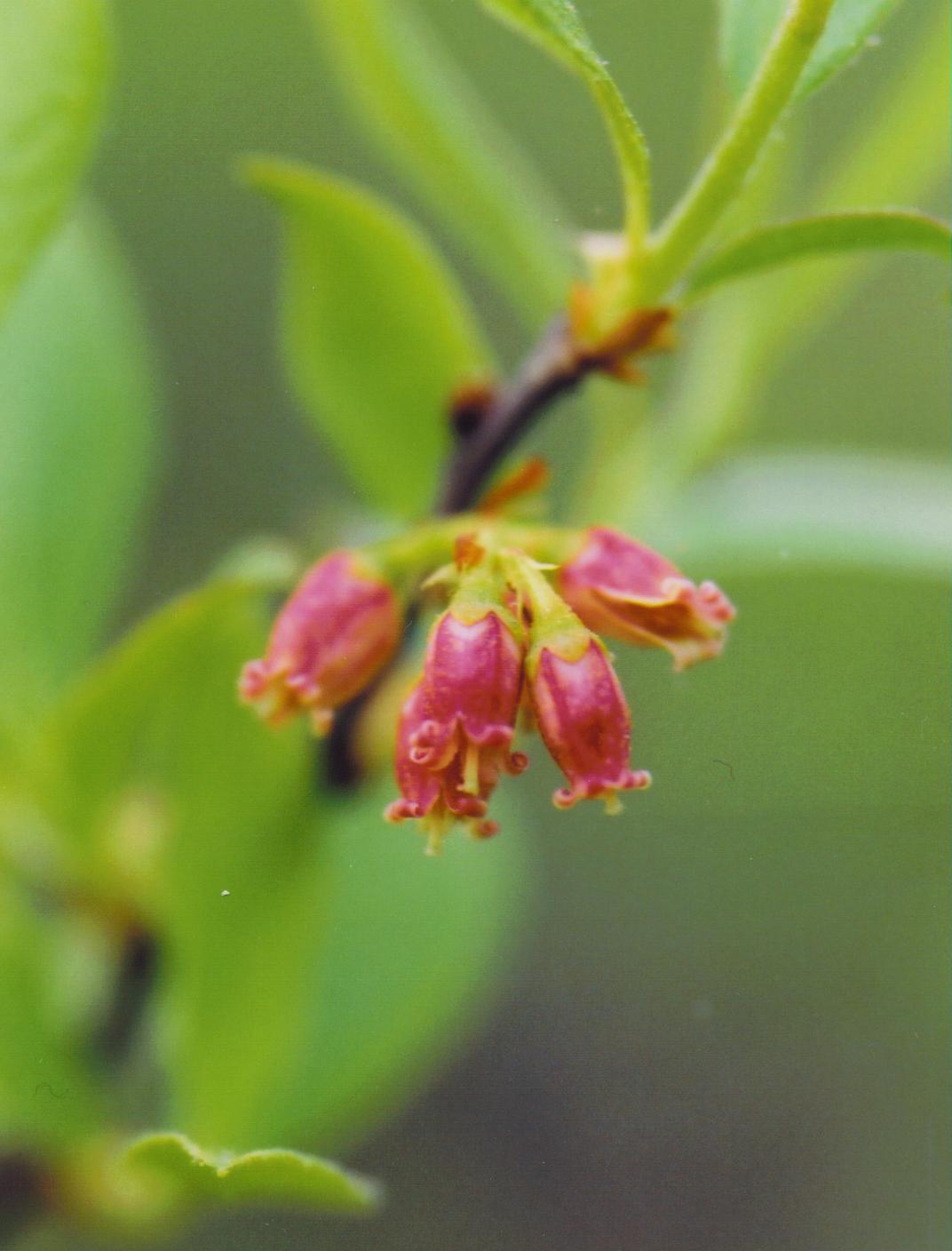
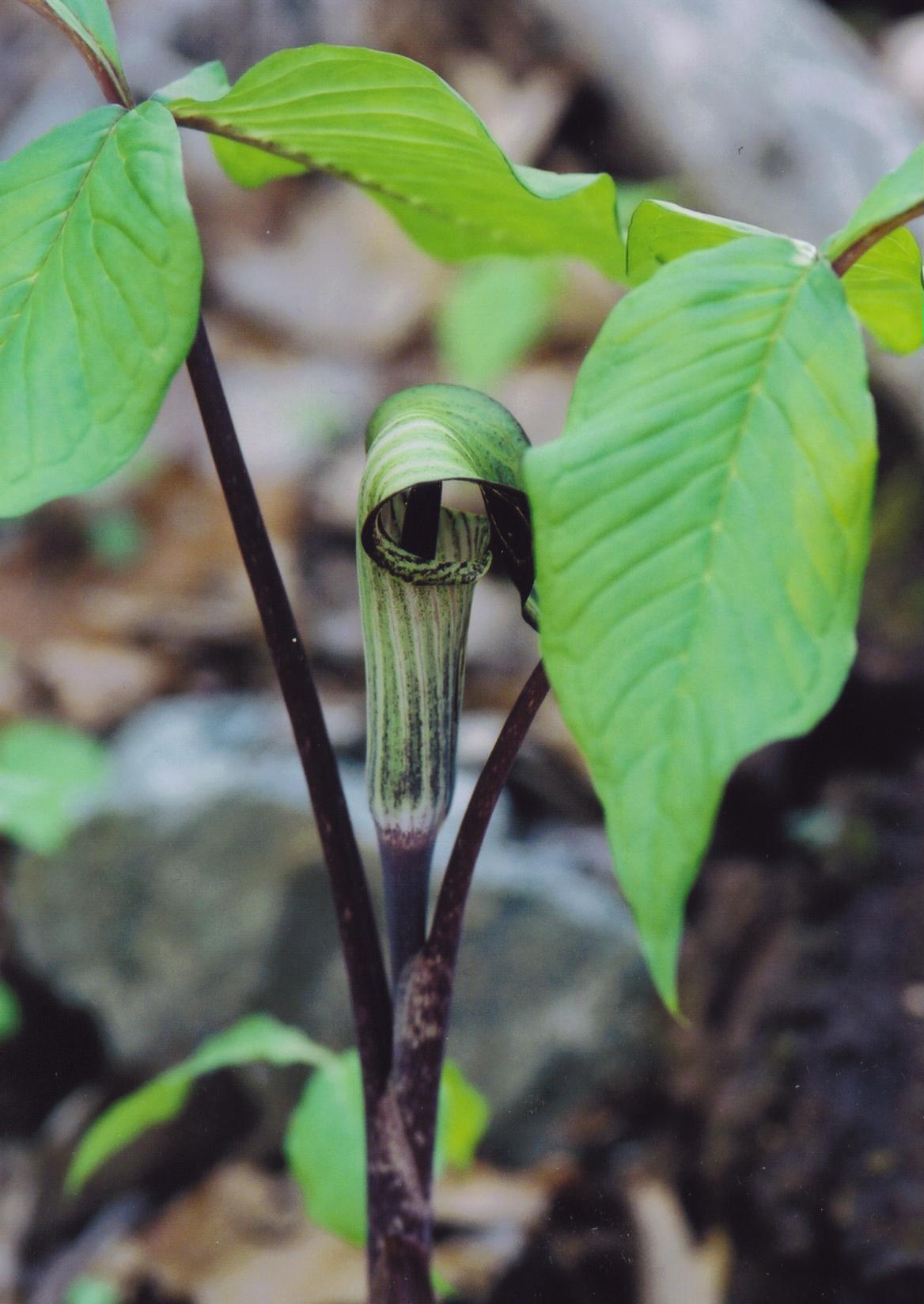
Black huckleberry 5-14-04
Jack-in-the-pulpit Arisaema
atrorubens 5-04-04
Gaylussacia
baccata
Meanwhile, the shoots of much else have been pushing up and in mid-May, the next group of flowers phase in. Most conspicuous – perhaps the ‘queen of the Fells’ - is the Pink Lady Slipper Orchid. It is all over the Fells, in some cases in patches containing scores, usually where there are white pines. Do admire this striking flower but don’t pick and don’t try to transplant to your garden – it won’t work. The roots are in a delicate association with various soil fungi. Other mid-May flowers are Canada Mayflower, related to our garden Lily of the Valley, and carpeting many places in the Fells, Wild Sarsaparilla, wild strawberry, Solomon's Seal, and, on rocky hill-tops – the striking Pale Corydalis. Also liking rocks but more in the woods are the beautiful red and yellow wild columbine. Not so common but present in some parts of the Fells are Starflower, and in some damp places the Nodding Trillium with its white flower hanging down under a canopy of three leaves. Much more showy is our native Dogwood tree with its typical large white flowers.
Much is rightly being written nowadays about
global warming. Spring flowers are particularly sensitive to
temperature for their flowering time. Records show that the
flowering times for several of the plants just mentioned have advanced
at least ten days, in some cases much longer, over the past fifty years
here in Eastern Massachusetts. Some may shrug and say, "Ah well,
so what?" but it isn't as simple as looking earlier for some
favorite flower. Flowers are pollinated by insects, in some cases
specific species of insect. Supposing the insect emergence gets
out of sync with the flower it is supposed to pollinate. Then the
plant's seed production is in jeopardy.

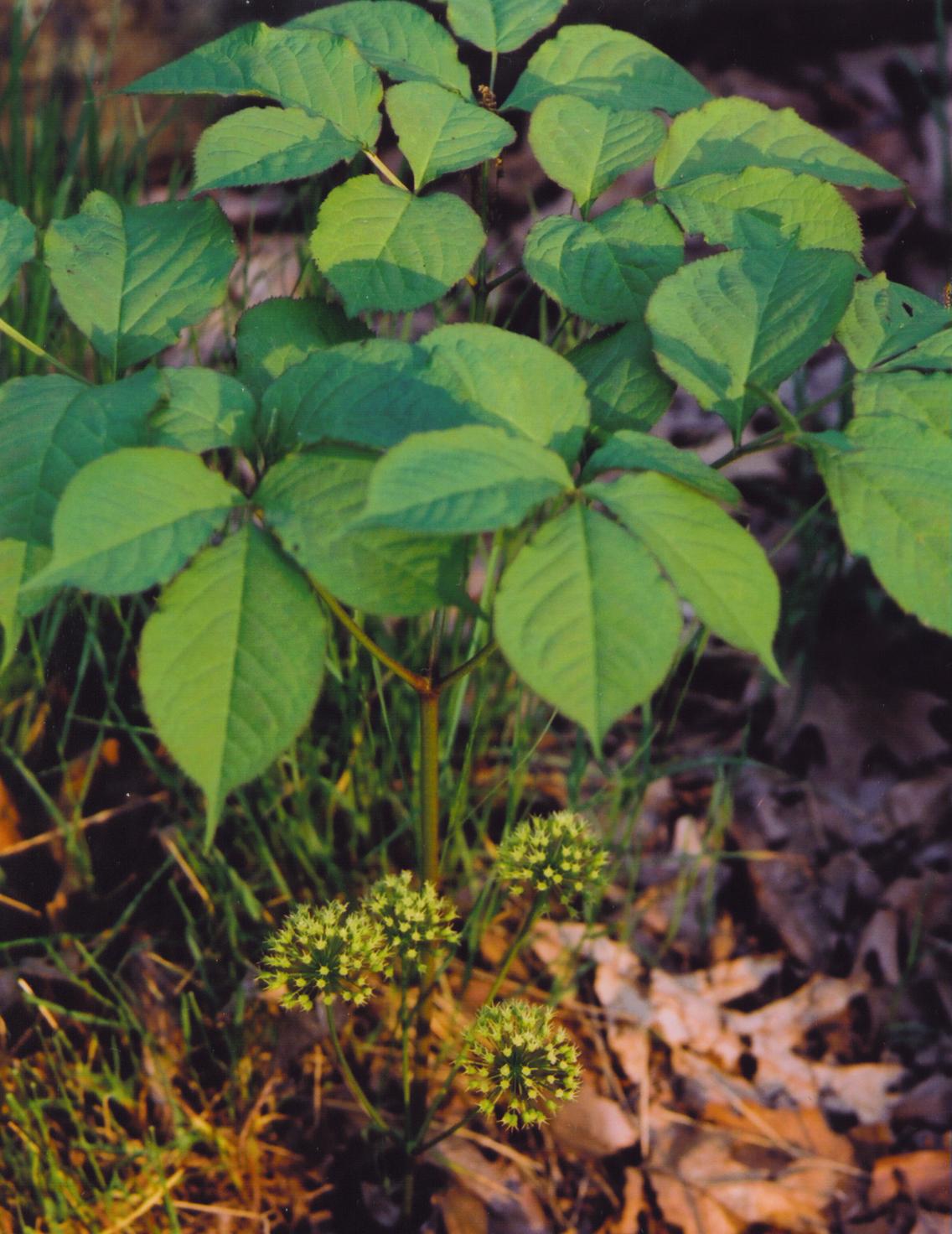
Canada
mayflower Maianthemum canadense
5-17-04
Wild sarsaparilla Aralia
nudicaulis 5-14-04

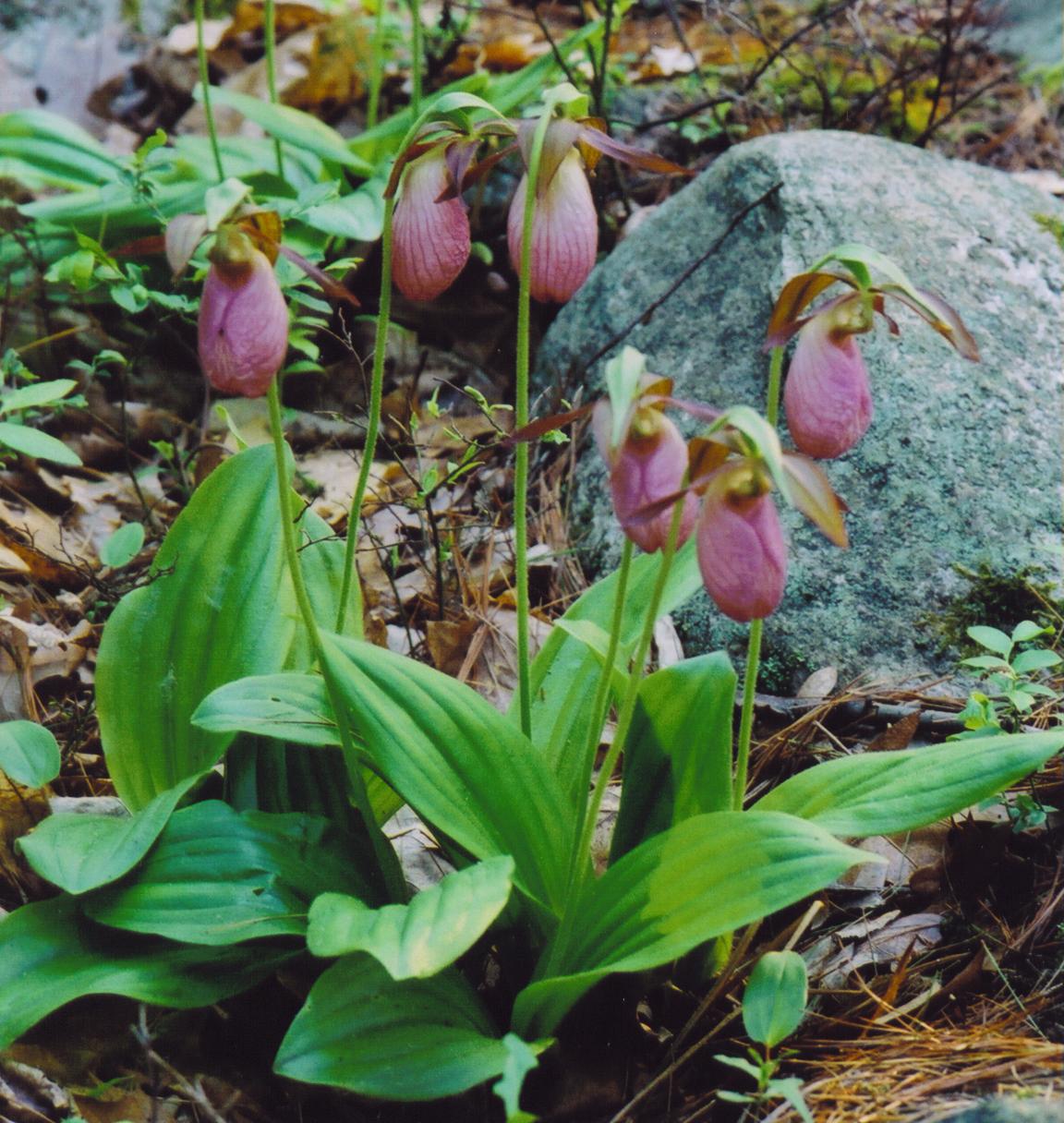
Wild
geranium Geranium maculatum
5-29-03
Pink Lady Slipper Orchids Cypripedium acaule 5-17-04
Towards
the end of the
month, in damp places, wild geraniums are common in the Fells and quite
lovely. And along some pathways - Wood Betony.